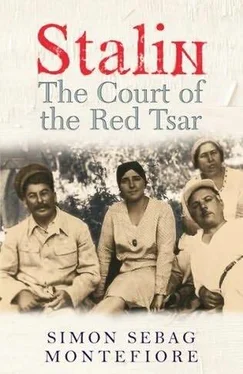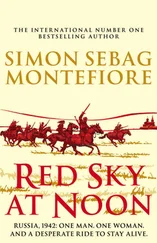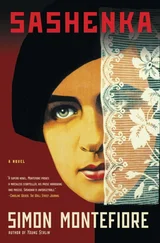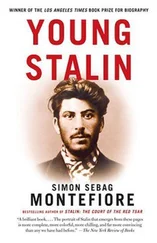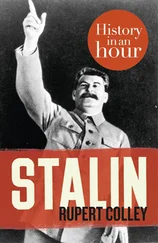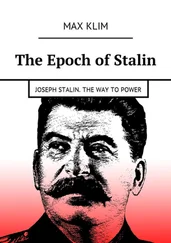Stalin easily defeated Sergo but the vehemence of his attack on the “hooligan” shows how seriously he took the strongest leader after himself. Moody and excitable, yet the very personification of the tough Stalinist administrator, Sergo Ordzhonikidze was born in 1886, the son of Georgian nobility. Orphaned when he was ten, he was barely educated but trained incongruously as a nurse. [61] After WW2, Stalin reminisced about how, in exile, “I, as a peasant, was given 8 roubles monthly. Ordzhonikidze as a nobleman got 12 roubles so deported noblemen cost the Treasury 50% more than peasants.” The other trained male nurse in the leadership was Poskrebyshev.
He had already joined the Party at seventeen and was arrested at least four times before joining Lenin in Paris in 1911, one of the few Stalinists to experience emigration (briefly). A member of the Central Committee since 1912 (like Stalin), he was personally responsible in 1921 for brutally annexing and Bolshevizing Georgia and Azerbaijan where he was known as “Stalin’s Arse.” Lenin attacked him for slapping a comrade and for indulging in drunken orgies with hussies but also defended him for his aggressive shouting by joking, “He does shout… but he’s deaf in one ear.”
In the Civil War, Sergo had been a dashing, leonine hero, at home on horseback (he was accused of riding a white horse through conquered Tiflis), so “young and strong,” it “seemed as if he had been born in his long military coat and boots.” He was explosively temperamental. In the early twenties, he actually punched Molotov in a row over Zinoviev’s book Leninism , an incident that demonstrates how seriously they took matters of ideology: Kirov had separated them. Sergo’s daughter, Eteri, recalls that this volcanic Georgian often got so heated that he slapped his comrades but the eruption soon passed—“he would give his life for one he loved and shoot the one he hated,” said his wife Zina.
Promoted to run the Control Commission in 1926, Sergo was Stalin’s most aggressive ally in the fight against the oppositions until he was placed in charge of Heavy Industry. He did not understand the subtleties of economics but he employed experts who did, driving them by charm and force. “You terrorize comrades at work,” complained one of his subordinates who were constantly appealing against his tempers. “Sergo really slapped them!” wrote Stalin approvingly to Voroshilov in 1928. “The opposition were scared!”
Sergo, who had flirted with, then betrayed Bukharin, was a forceful supporter of Stalin’s Great Turn—“he accepted the policy heart and soul,” said Kaganovich. Beloved by friends from Kaganovich to Bukharin and Kirov, Sergo was “the perfect Bolshevik,” thought Maria Svanidze, and “chivalrous” too, according to Khrushchev. “His kind eyes, grey hair and big moustache,” wrote Beria’s son, “gave him the look of an old Georgian prince.” Owing his career to Stalin, he remained the last big beast of the Politburo, sceptical about Stalin’s cult, with his own clientele in industry and the Caucasus whom he was capable of defending. He was certainly never afraid to disagree with Stalin [62] Stalin treated Sergo like an uncontrollable younger brother: “You were trouble-making this week,” Stalin wrote typically to him, “and you were successful. Should I congratulate you or not?” On another occasion: “Tomorrow, the meeting on bank reform. Are you prepared? You must be.” When Stalin scolded him, he added, “Don’t dress me down for being rude… Actually, tell me off as much as you like.” He usually signed himself “Koba.” Sergo’s notes almost always disagree with some decision of Stalin’s: “Dear Soso,” he carped in one note, “is the new Russia being built by Americans?” He was quite capable of giving Stalin instructions too: “Soso, they want to put Kaganovich on civil aviation… Write to Molotov and Kaganovich and tell them not to!”
whom he treated like a prickly elder brother: sometimes he even gave him quasi-orders.
In September 1933, Sergo was holidaying in Kislovodsk, his favourite resort, whence he was soon in brisk correspondence with Stalin who resented this big-hearted “prince.” Sergo was, Stalin complained, “vain to the point of folly.” 17
* * *
“Here on vacation,” Stalin wrote, “I do not sit in one place but move from one location to another…” After a month, Stalin moved southwards to his newly built house at Museri. Set atop a hill in a semi-tropical park, it was an ugly grey two-storey residence with his beloved wood panelling, expansive verandas, large dining room and a beautiful view down to a harbour where Lakoba had constructed a special jetty. It was surrounded by walks along serpentine paths that led to a round summerhouse, where Stalin worked, and down steps to the sea. Often Lakoba and Stalin strolled down to a nearby village where the locals laid on al fresco Abkhazian feasts.
On 23 September, Lakoba arranged a boating and shooting trip: Stalin and Vlasik motored along the coast from the specially built jetty on a motor yacht, Red Star , with their guns on their knees. Suddenly there was a burst of machine-gun fire from the coast.
10. SPOILED VICTORY
Kirov, the Plot and the Seventeenth Congress
Vlasik threw himself onto Stalin on the deck of the Red Star, requesting permission to return fire. Firing shots landwards, the boat turned to the open sea. Stalin initially thought it had just been Georgians firing a greeting but he changed his mind. He received a letter from the border guards admitting they had fired, mistaking it for a foreign vessel. Beria investigated personally, displaying his ruthlessness to get results which impressed Stalin. Yet he aroused suspicions that he had contrived the attack to undermine Lakoba, who was responsible for security inside Abkhazia. The guards were despatched to Siberia. Vlasik and Beria became closer to Stalin. 1
Back on dry land, the entourage progressed into Gagra, where the GPU had found a new dacha in the hills which Lakoba had started to rebuild. This became a favourite residence, Kholodnaya Rechka, Coldstream, a Stalinist eyrie built on a cliff with views of dazzling natural beauty. [63] The Gagra house is one of the most beautiful of Stalin’s residences but also the least accessible. The children later got their own houses. A snake path of steps twists down to the sea. Yet it is invisible from the land. Like most of these houses, it is still under the control of the Abkhazian presidential security, hidden, eerie but perfectly preserved. Museri adjoins the same secret CC resort, Pitsunda, where Khrushchev had a house as First Secretary and where, in the eighties, Mikhail Gorbachev and Raisa his wife were criticized for building a multi-million-pound holiday house. All remain empty yet guarded in the steamy Abkhazian heat.
Returning to Sochi, Svetlana stayed with Stalin but when she went back to school, he found himself “like a lonely owl” and craved Yenukidze’s company. 2“What keeps you in Moscow?” he wrote to Abel. “Come to Sochi, swim in the sea and let your heart rest. Tell Kalinin from me that he commits a crime if he doesn’t send you on holiday immediately… You could live with me at the dacha… I’ve visited the new dacha at Gagra today… Voroshilov and his wife are enchanted with it… Your Koba.” 3
* * *
After this long holiday, the “lonely owl” returned to Moscow, on 4 November 1933, to plan the coming Congress of Victors which was to crown him for the triumphs of the last four years. Moscow felt as if it was waking up and stretching after a long nightmare. The famine was over. The harvest had improved. The starving millions were buried and forgotten in villages that had disappeared forever off the map.
Читать дальше
